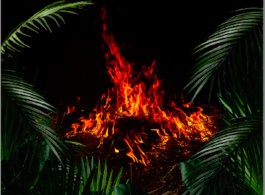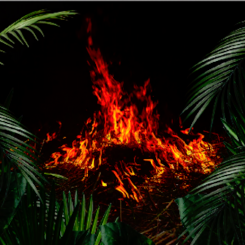The Invisible Other (Chapter 3)
Taking the lead from pervasive beliefs and superstitions in Southeast Asia about
otherworldly beings, Phantoms and Aliens | The Invisible Other broadens the
perception of phantom as invisible spirit to explore another, subtler dimension of
invisibility, that is, social invisibility originated in discrimination and alienation.
Featuring works that span documentary photography and oral history, to
painting, mixed-media and video installations, the overarching focus of the
exhibition is to consider the invisible other in society: the people, or
communities, that live on the margins because of ethnic, religious or cultural
differences. These individuals are but phantoms, alienated from the wider
society – they are invisible, yet, they exist.
By migrating from the inside out in the attempt to map alienation from multiple
angles, Phantoms and Aliens | The Invisible Other is devised as a triptych
unfolding across Richard Koh’s three galleries located in Bangkok, Kuala
Lumpur and Singapore. Taking the form of a chapter at each location, the three
chapters combined are intended as interconnected chambers to share knowledge
in relation to specific concerns of life at the periphery. By osmosis, each chapter
complements the other in a mutually informative and experiential manner.
Specifically, the Singapore chapter focuses on everyday discrimination and
imposed suffering, through seemingly prosaic activities. Pao Houa Her’s
photographic installation My Grandmother’s Favourite Grandchild examines
the artist’s relationship with her family, with whom she relocated to the United
States from Laos as Hmong refugees after the Vietnam War. Pot Pagoda by
Khin Thethtar Latt takes its inspiration from the village Mrauk Oo in war-torn
Rakhine State. In her installation, the pot becomes a symbol, a way to imagine
an alternative life to daily discrimination. The Slaughterhouse paintings by
Nguyễn Văn Đủ portray crucial moments, and metaphorical allusions, to the
daily butchering of cattle where sacrifice is upheld against vulnerable beings.
Complementing the exhibition through the intersection between art and
anthropology, are ethnographic materials that encompass video, field notes,
photography and text. Titled Borders re/make Bodies: Chiang Mai Ethnography
(2017- ongoing), Samak Kosem’s doctoral research focuses on assumptions
about masculinity and gender perceptions of male migrants and transborder
individuals in Chiang Mai through the critical framework of body politics.
Based between London and Bangkok, Loredana Pazzini-Paracciani is an independent curator, writer and
lecturer of Southeast Asian contemporary art. Her research and curatorial practice revolve around critical
sociopolitical issues in Southeast Asia, advocating a counter-hegemonic and non-Western-centric discourse.
Together with Patrick D. Flores, Loredana co-edited the anthology Interlaced Journeys: Diaspora and the Contemporary in
Southeast Asian Art, which is scheduled to be published in 2020.Khin Thethtar Latt (aka Nora, b. 1990) is a multimedia artist and filmmaker borned and raised in
Myanmar. Based in Yangon and active since 2009, Nora’s art practice is concept-based and spans different media
which she chooses to best deliver her concept, such as narrative story telling for paintings and performing arts or
film-making for documentary purposes.Born in Laos of Hmong descent, Pao Houa Her (b. 1982) was raised in Saint Paul Minnesota (USA), where
she relocated as a young child with her family as the result of the Vietnam War. She currently lives in Blaine
Minnesota, a suburb of Twin Cities. She received an MFA in Photography from Yale University School of Art
(2012) and a BFA in Photography from the Minneapolis College of Art and Design (2009).Nguyễn Văn Đủ (b. 1986) works and lives in Ho Chi Minh, Vietnam. He is a Fine Arts graduate from Ho
Chi Minh University with a major in oil painting. Đủ’s main concern in his practice is to explore how personal
perceptions of the people’s daily routines in Vietnam are informed by education and social status. He is drawn to
ethical and moral questions behind nationalism and the violence that often ensues its pursuit, hence his practice
is marked by a ceaseless research into more profound levels of meaning of life.Samak Kosem (b. 1984) works and lives between Chiang Mai and the Deep South, Thailand. Through
photography and visual ethnography, his anthropological practice explores how non-human relationships
impact and represent human behaviour. More recently, Samak’s work dwells on understanding the limits of
gender perspectives in Southern Thailand’s Muslim culture and in particular on how homosexuality is lived in
the Islamic society.


